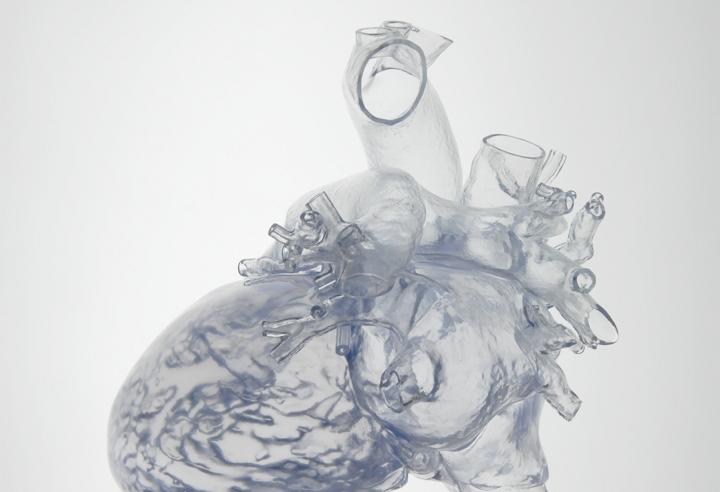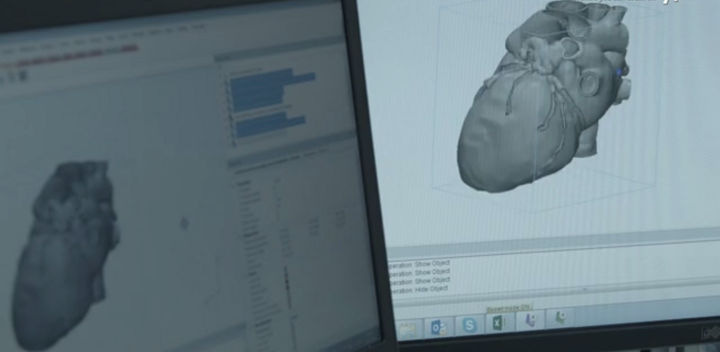Biomedical engineers are making astonishing strides in how medical professionals can take on health problems and improve the lives of patients.
They use engineering principles and design concepts to close the gap between engineering and medicine by combining the design and problem-solving elements of engineering with medical and biological sciences. Much of the work in biomedical engineering is research and development related, but the discipline spans a broad range of sub-specialties from the development of biocompatible prostheses, various diagnostic and therapeutic medical devices like micro-implants, and building modeling data used for pre-surgical planning and design.
 Now Belgian innovator Materialise has just released the latest iteration of their Mimics Innovation Suite, a complete set of 3D software tools developed for biomedical professionals.
Now Belgian innovator Materialise has just released the latest iteration of their Mimics Innovation Suite, a complete set of 3D software tools developed for biomedical professionals.
Materialise calls it Engineering on Anatomy, and the suite allows for the processing and editing of anatomical data from CT and MRI scans. This latest release of the suite includes improvements to visualization capabilities such as fluoroscopy view and virtual X-ray simulation.
Fluoroscopy view allows medical engineers to simulate the angiographic view they would encounter during surgery. They can also identify the optimal c-arm angles for fluoroscopy and tailor them precisely to capture the region of interest.
“This impressive new tool will be useful for our case planning as well as during conversations with physicians,” says Principal R&D Engineer at Medtronic, Srinivasan Varahoor.
Using the Mimics Innovation Suite, Medtronic developed a method of obtaining geometric parameters from actual patient data to define in-vivo use conditions. Patient CT data was collected and delivered to Varahoor’s research and development team, who then used Mimics software to segment a 3D aortic model from the datasets. This hybrid method of combining actual patient data with statistically assessed geometric parameters means that the resulting vascular models can be adapted to fit any requirements for testing that might arise.
Yet another new visualization option, the virtual X-ray tool, makes it possible for engineers to create virtual X-rays of projects which allows them to discover the optimal angle for the 2D and 3D registration of bones and implants. The function essentially allows medical professionals to understand outcomes without the need for post-operative CT or MRI scans.
Materialise says the automated Heart Segmentation feature of this latest release represents a “flexible, user-friendly solution [which] allows for an effortless segmentation of the cardiovascular anatomy for advanced research and analysis.”
Once a dataset is created, segmentation requires just a few mouse clicks – rather than several hours of tedious work – and the ‘Loft’ and ‘Sweep Loft’ tools make it easy to design benchtop models of that data.
Advanced export options now make it possible to add a logo to a model design for export in the Materialise .zpr format which allows for 3D printing in multiple colors. Surgeons have said they find that holding and being able to demonstrate concepts with these models can improve the understanding of anatomical structures.
Materialise says software improvements are just the tip of the iceberg when it comes to this latest update to Mimics. The suite now includes a new method to characterize the mitral valve, and a patent-pending workflow provides detailed analysis of those complex anatomical structures and reduces the number of design iterations preceding clinical trials.
If you need more detailed information about this latest update, you can contact the Mimics Innovation Team.
Have you ever used the groundbreaking Mimics Innovation Suite software in your work? Let us know in the Mimics Innovation Suite forum thread on 3DPB.com.
Subscribe to Our Email Newsletter
Stay up-to-date on all the latest news from the 3D printing industry and receive information and offers from third party vendors.
Print Services
Upload your 3D Models and get them printed quickly and efficiently.
You May Also Like
Export-Import Bank of U.S. Loans $27.4M to 6K Additive to Boost U.S. Metal Powder Output
Critical minerals have overtaken news cycles all year, with U.S. tariffs and Chinese export curbs disrupting supply chains and driving new waves of investment. As recently as last week, at...
Formnext 2025: Day Four: Beauty the World (Through Missile Defense)
Day four, without the Americans and executives, is a joy. It feels a bit like the last days of summer, languid, time passing in globs of molasses. In looking back,...
Firestorm Labs’ xCell Helps U.S. Army Train for 3D Printed Drone Missions
The U.S. Department of War (DoW) has been telling anyone who will listen that the Pentagon is making major changes to how it procures equipment. In a recent speech at...
Trident Warrior 2025 Becomes a Massive Showcase for 3D Printing — With 11 AM Companies in the Field
Every year, the U.S. Navy runs an exercise called Trident Warrior to test new technologies under real operating conditions. In 2025, the biggest surprise was how central 3D printing became....




































